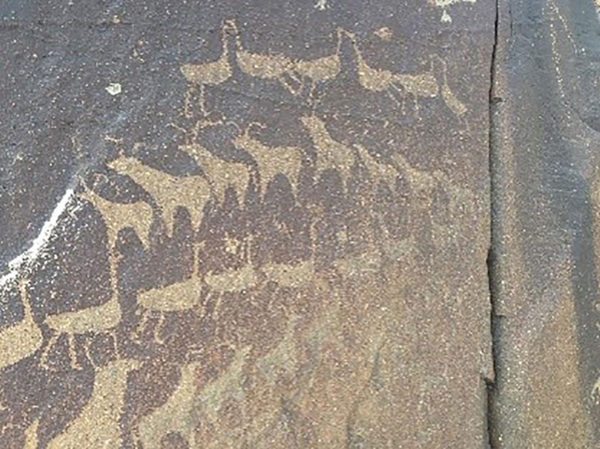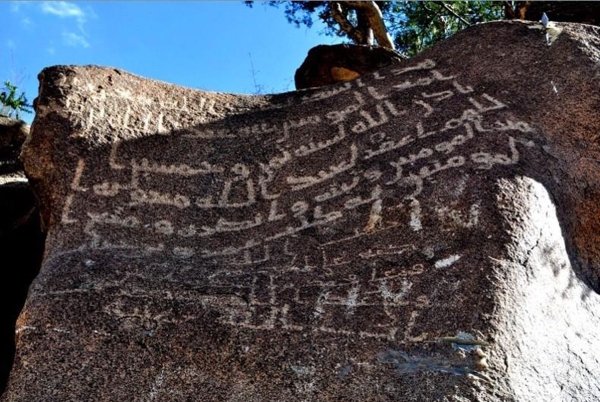

Hima Al-Nomoor is an archaeological site located in Makkah Al-Mukarramah Province in the Kingdom of Saudi Arabia. It is situated on the northeastern and northwestern edges of Al-Hada Center in Taif Governorate. The site features ancient rock carvings and inscriptions, with over ninety drawings and inscriptions discovered, including Thamudic inscriptions and early Islamic inscriptions dating back to the first centuries of the Hijra. The inscriptions are concentrated around a water outlet that serves as a tributary to the main valley, one of the valleys of Al-Hada Mountains, extending from west to east.
Geographic location of Hima Al-Nomoor
Hima Al-Nomoor is located in a rocky and rugged area west of Taif Governorate, accessible from its southeastern side about fifty m before the summit of Al-Naqba Al-Hamra at a place called Al-Bawabah (the Gate) at the meeting point of the old Taif – Al-Hada road with the highway.
Inscriptions and antiquities at Hima Al-Nomoor
The inscriptions on the rocks of Hima Al-Nomoor are diverse. Some depict schematic drawings of cattle with curved and twisted horns, as well as representations of ibexes with upward-curving horns. Additionally, the site includes scenes of ostrich hunting and various tribal markings (Wusum).
The written inscriptions are among the most significant historical features of Hima Al-Nomoor, particularly as they date back to the first three centuries of the Hijri calendar. These inscriptions include the names of individuals who passed through the site, as well as various phrases, sentences, prayers, and Quranic verses that have been preserved on the rocks of the area since the time they were inscribed.
Historical significance of Hima Al-Nomoor
Hima Al-Nomoor was historically part of the route connecting Taif to Makkah al-Mukarramah, from the pre-Islamic era until the first three centuries of the Hijri calendar. In the fourth century AH, Aqabat Kara route was introduced, gaining the attention of travelers moving between Taif and Makkah Al-Mukarramah due to its shorter distance compared to the older route. This route allowed access to Noman Valley at the base of the mountain, leading to the holy sites in Makkah Al-Mukarramah and into the heart of the city. Aqabat Kara was later officially developed, transforming into a pathway for pedestrians, camel riders, and eventually vehicles, becoming one of the main roads connecting Makkah Al-Mukarramah and Taif, alongside Al-Sail Road, which connects Taif from the direction of Miqat Qarn Al-Manazil.
Miqat Wadi Muharram, adjacent to the Hima Al-Nomoor route, is one of the primary stations for pilgrims and Umrah performers traveling from the eastern and southern parts of Saudi Arabia to Makkah Al-Mukarramah. It serves as a Miqat for entering the state of Ihram and declaring the intention for Hajj or Umrah.
Tourism at Hima Al-Nomoor
In addition to its archaeological and historical importance, Hima Al-Nomoor is a popular tourist destination, particularly after rainfall when waterfalls form, cascading from the highest peaks of Al-Hada. The site is home to a variety of flowers, aromatic plants, and ancient juniper trees, attracting nature enthusiasts and those seeking relaxation, recreation, and camping experiences.
Related quizzes
Related articles


